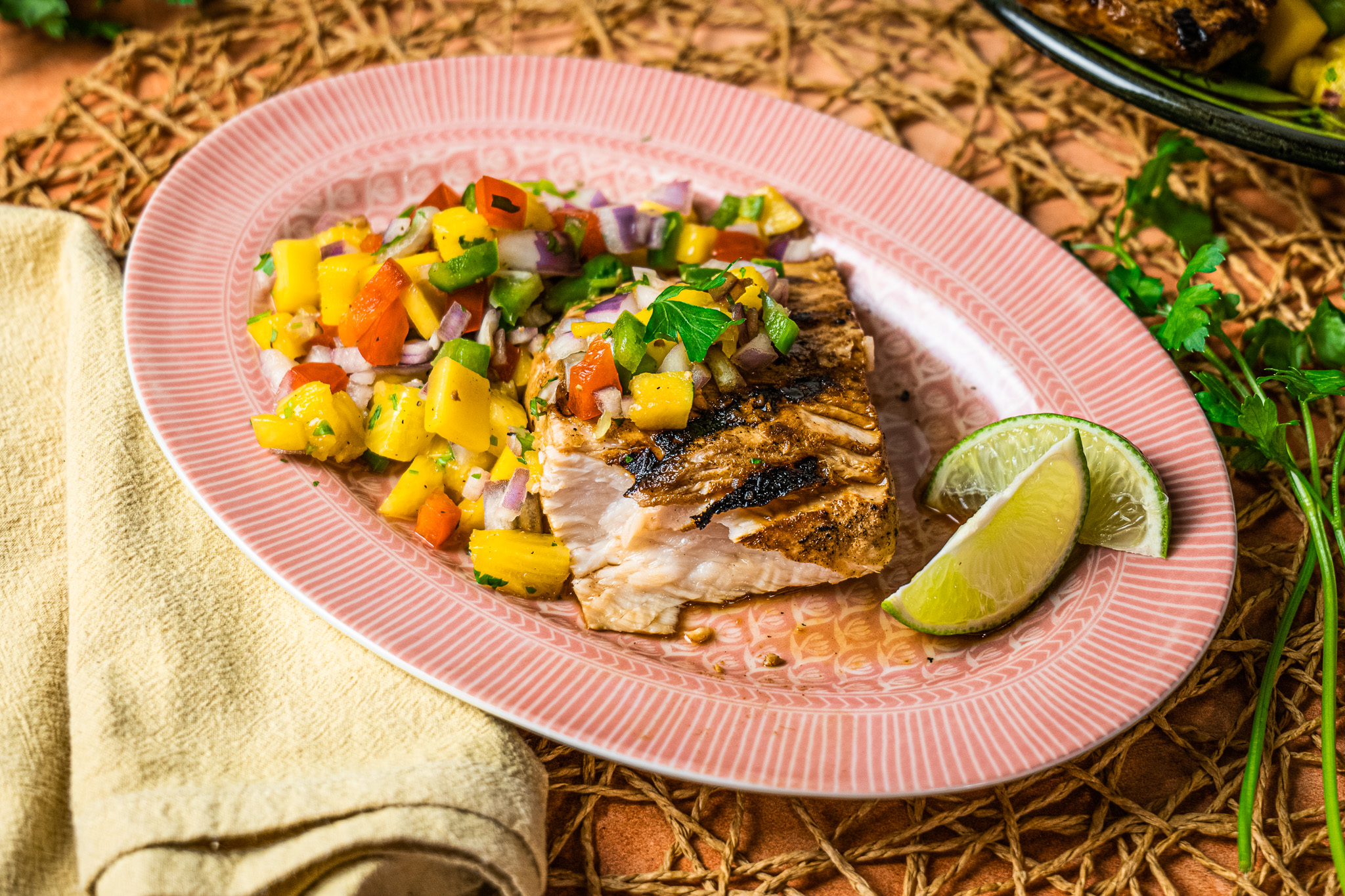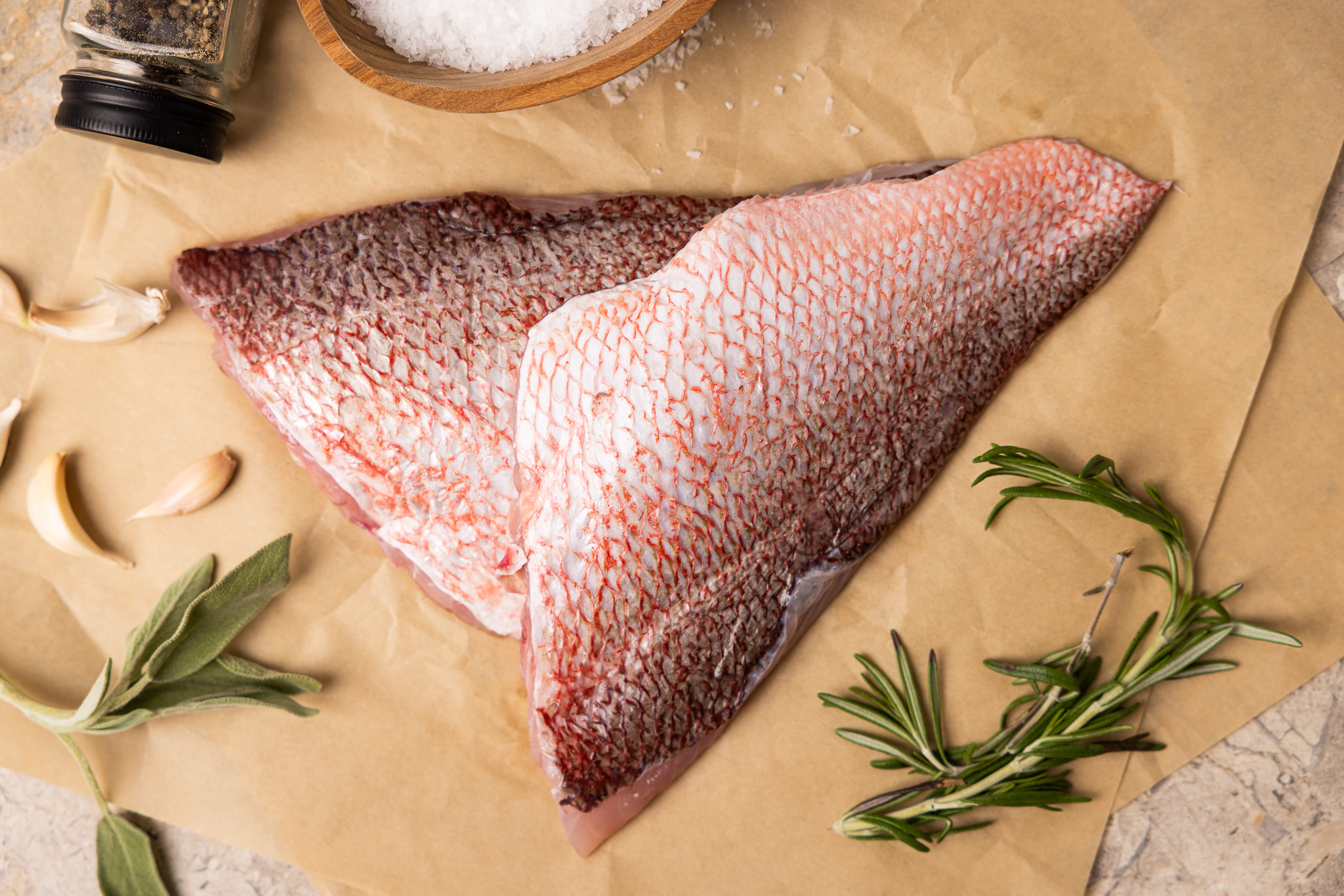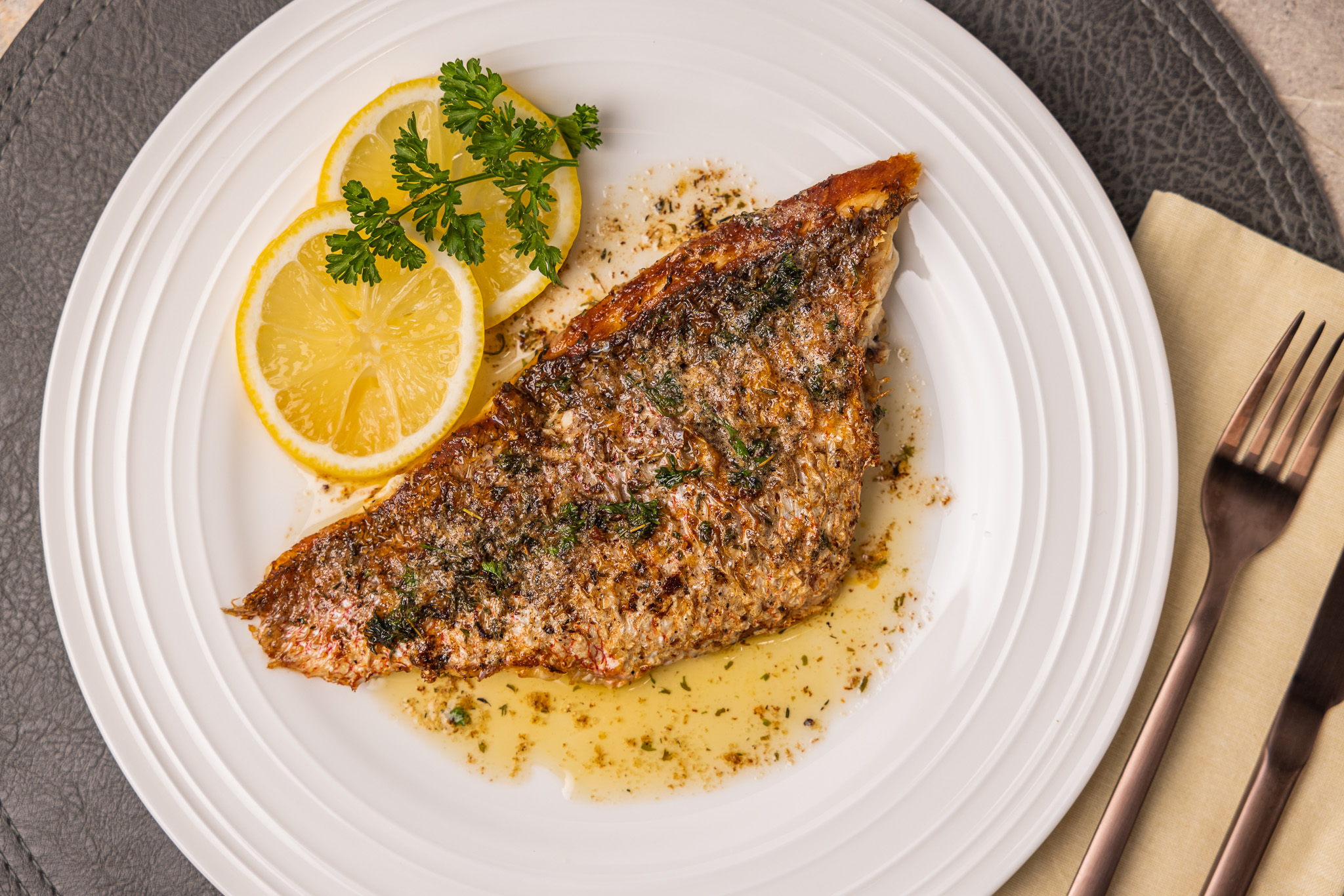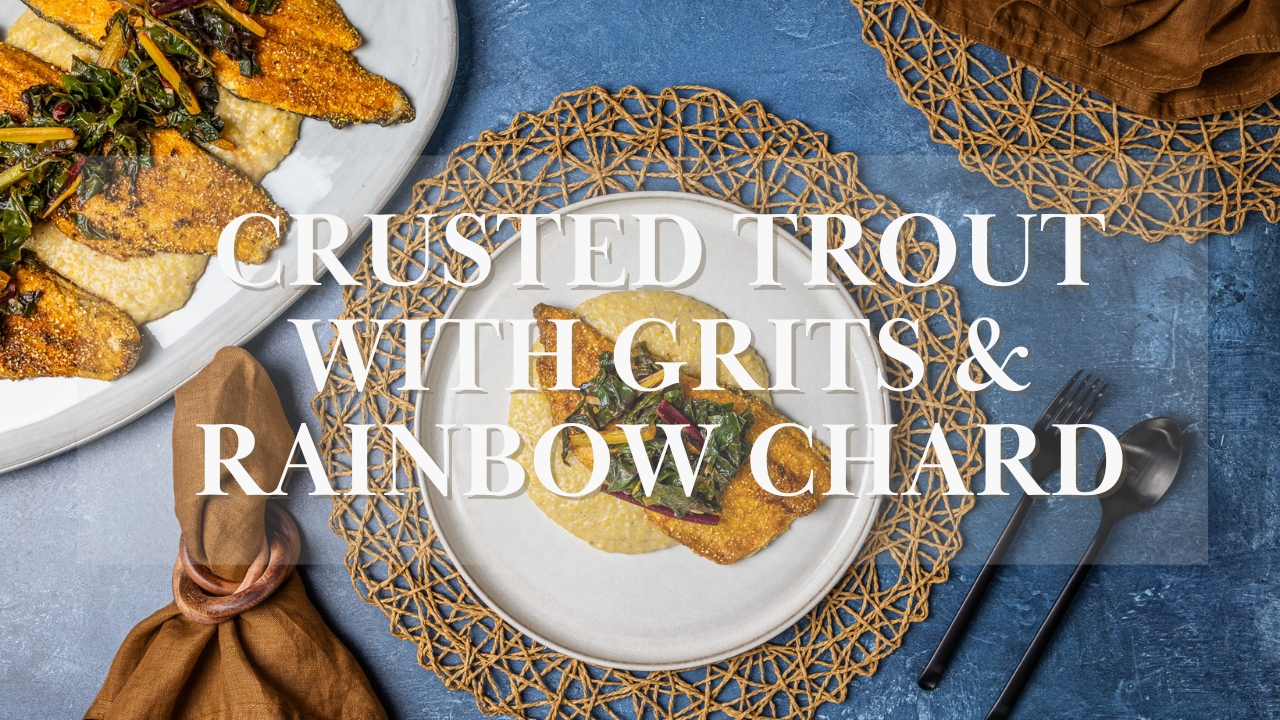
6 Types of Fish You Aren't Eating That You Should Try
If you eat fish, you've most likely already tried cod, the standard white fish used by restaurants, while out to eat. Salmon is another great choice and has become common in restaurants and at-home cooking. If it's time to get outside of the box with your usual pescatarian choices, we're here to give you the ins and outs, tips, and tricks, and ups and downs to make your next grocery trip go swimmingly. In this editorial, we'll cover some of the healthiest fish you can look for at your local grocery store.
1. Atlantic mackerel
Atlantic mackerel is a fish caught off the Atlantic coast in the North Atlantic Ocean. It has a high oil content, with a robust, distinct flavor that is often described as intense and slightly oily. Its firm and meaty texture makes it a great option for a variety of cooking methods. Atlantic Mackerel has a higher omega-3 fatty acid and Vitamin D content making it beneficial for brain, bone, and heart health.
This fish can be found fresh, frozen, or smoked (a delicacy in some cuisines)!
Serving Suggestions: Atlantic mackerel pairs well with a variety of flavors, including citrus, fresh herbs (such as dill or parsley), garlic, and tangy sauces. It can be served with sides like roasted vegetables and balsamic glaze, couscous, quinoa, or a light salad. Try combining it with cream cheese and fresh herbs to make a mackerel pâté that'll impress your family and friends at your next dinner party!
When cooking Atlantic mackerel, it's important to avoid overcooking to maintain its moistness and flavor. Keep in mind that mackerel has a stronger taste compared to some other fish, so its bold flavors can complement a wide range of seasonings and accompaniments.

2. Mahi Mahi
Mahi Mahi, also known as dolphinfish, is a popular and versatile fish that is highly valued for its firm texture, mild flavor, and vibrant appearance. Have no worries, despite its name, dolphinfish are not related to the beloved dolphins! Mahi Mahi is known for its moderately firm texture and mild, slightly sweet flavor. Its lean flesh has a delicate taste that is versatile and can be complemented by a variety of seasonings and sauces. Mahi Mahi's versatile nature lends itself well to various cooking methods:
-
Grilling: Grilling mahi mahi is a popular method that imparts a smoky flavor while maintaining its firm texture. Marinate the fish with your choice of herbs, spices, and citrus before grilling.
-
Pan-Searing: Searing mahi mahi in a hot skillet creates a crispy crust on the outside while keeping the interior moist and tender.
-
Baking: Baking mahi mahi is a gentle method that requires less hands-on attention. Season the fillets and bake them in the oven until they are opaque and flaky.
-
Broiling: Broiling provides quick and even cooking, giving the fish a nice caramelized top. Be mindful of the cooking time to prevent overcooking.
-
Ceviche: Mahi mahi can be used to make ceviche, a dish in which the fish is "cooked" in citrus juices and combined with ingredients like onions, tomatoes, and cilantro. Try some fresh mahi mahi in our ceviche recipe [here.]
-
Tacos and Sandwiches: Mahi mahi is a popular choice for fish tacos and sandwiches due to its mild flavor and versatility in accommodating various toppings and condiments. Try a blackened mahi mahi bacon BLT next time you want to level up your sandwich game!
Not only is this fish extremely versatile, but it is also a fantastic source of protein with many vitamins and minerals, including selenium, magnesium, phosphorus, and potassium.

3. Rainbow trout
Rainbow trout has a delicate flavor with a mild, slightly nutty taste. The flesh is tender and flaky, making it a popular choice for a wide range of cooking methods. Rainbow trout are found in various freshwater habitats, including rivers, streams, lakes, and reservoirs. They are native to North America and have been introduced to many other regions around the world for recreational fishing and aquaculture. Here are some of the most popular ways to cook your rainbow trout:
-
Grilling: Grilling is a popular method for cooking rainbow trout. The fish can be seasoned with herbs, spices, and citrus before being grilled over an open flame or on a grill pan. Rainbow trout can be easily elevated when grilled, baked, or roasted when paired with bright vegetables, citrus, and even crispy legumes like black eyed peas.
-
Baking and Roasting: Baking or roasting rainbow trout in the oven with herbs, lemon, and other seasonings is a simple and flavorful preparation method.
-
Pan-Frying: Pan-frying rainbow trout creates a crispy outer layer while keeping the flesh moist and tender. Lightly coat the fish with flour or breadcrumbs before frying. Fried rainbow trout is a popular dish in the southern states of America and is usually paired with fried hushpuppies.
-
Poaching: Poaching rainbow trout in a flavorful liquid, such as broth or white wine, helps maintain its delicate texture and absorb complementary flavors.
-
Smoking: Smoking rainbow trout imparts a smoky aroma and flavor. Smoked trout can be enjoyed on its own, added to salads, used as a topping for appetizer, or made into a delicious smoked trout dip eaten with butter crackers.
Rainbow trout is notably different in taste and texture than steelhead trout you may find at your grocery store or local fishmonger. Rainbow trout is a flaky, white fish, while steelhead trout has a texture and flavor a bit more robust, quite similar to salmon.


4. Red Snapper
Red snapper is a popular and highly prized saltwater fish known for its firm texture, sweet and nutty flavor, and striking appearance. It is widely sought after by anglers and is a favorite among seafood enthusiasts. Red snapper is characterized by its vibrant reddish-pink color, which gives it its name. Here's a closer look at the best culinary practices with Red Snapper:
-
Grilling: Grilling red snapper enhances its natural flavors and imparts a subtle smokiness. The fish can be seasoned with a variety of herbs, spices, and citrus before grilling, and paired with various vegetables.
-
Baking and Roasting: Baking or roasting red snapper in the oven with herbs, garlic, salt and olive oil is a popular and simple preparation method. Pair your snapper with quinoa, rice, and vegetables like zucchini and squash.
-
Pan-Frying: Pan-frying red snapper gives the crispy outer layer while keeping the tender and flaky flesh.
-
Steaming: Steaming red snapper is a gentle method that preserves its moisture and flavor. The fish can be steamed with aromatics like ginger and scallions.
-
Ceviche: Red snapper is often used to make ceviche, a dish in which the fish is "cooked" in citrus juices and combined with vegetables and herbs.
-
Sushi: Red snapper is perfect for sushi beginners as it has a subtle flavor that's sweet and not super fishy in comparison to other types.

5. Sardines
Maybe you've seen them on a fancy salad bar and swerved far away from them, or maybe they're one of your favorite pizza toppings. Sardines may not be the most popular fish, but these tiny fishes are packed with vitamins and nutrients like Vitamin B12, selenium, Vitamin D, and calcium, and are one of the highest sources of omega-3s on the planet. They have a distinctive flavor that is often described as bold, briny, and slightly fishy. Their firm texture makes them well-suited for a variety of preparations, from simple to elaborate dishes. Sardines can be enjoyed in several ways:
-
Fresh: Fresh sardines can be grilled, broiled, or pan-fried. Simply season them with herbs, spices, and lemon juice before cooking.
-
Canned: Canned sardines are a convenient, economical option and are available in various forms, such as packed in water, oil, or tomato sauce. They can be enjoyed straight from the can, or added to salads, sandwiches, or pasta dishes.
-
Smoked: Smoked sardines have a distinct smoky flavor and can be used in spreads, dips, or as a topping for crackers and cheese.
-
Pickled: Pickled sardines are often enjoyed as a flavorful and tangy appetizer.
When choosing sardines, opt for those that are sustainably sourced to help protect marine ecosystems. Look for labels indicating sustainable fishing practices or certifications from organizations like the Marine Stewardship Council (MSC).
So no need to be intimidated by these little fish anymore, instead, buy yourself a can or two of sardines and try mashing them into a spread with lemon juice, olive oil, and fresh herbs you can dip crackers into, or try tossing them into a pasta dish with pasta, garlic, olive oil, pepper, and fresh herbs. You may even convert the most skeptical of your friends and family!
6. Alaskan Salmon
Typically you'll find a couple different varieties of salmon at the market: Atlantic salmon (farm-raised), and Alaskan sockeye salmon (wild-caught). There are actually many other species of salmon you can find, including Coho, King, Pink, and Keta. Let's break down the differences between our varieties of salmon:
Atlantic Salmon (farm-raised): a flaky, buttery texture with a mild flavor. Atlantic salmon is the usual choice for restaurants to serve with good reason: this salmon carries flavor well and is one of the less-fishy-tasting species. It has a higher fat content which contributes to its buttery texture.
Coho Salmon (wild-caught): a mild-tasting, reddish-orange wild-caught salmon variety that is usually found off of the Pacific coast and Alaska. Coho has a high oil content, making it high in omega-3 fatty acids.
Wild Alaskan King Salmon: also known as chinook salmon, this species of salmon has the highest concentration of omega-3s.
Pink Salmon: the smallest of the Pacific salmon, and often found canned at the market.
Keta Salmon: also known as chum salmon, this salmon is delicious when caught and flash-frozen in the silverbite phase of maturity, with a mild flavor compared to sockeye salmon.
Sockeye salmon (wild-caught): a sustainably caught fish with a rich, robust flavor and dark reddish-orange color. Sockeye salmon is high in omega-3 fatty acids, as well as B12, niacin, and selenium.
What's the Catch?
Like with anything, fish should be eaten in moderation. Fish and shellfish naturally contain mercury, which is toxic to all humans. For the general population, mercury is not a huge concern but women who are pregnant or breastfeeding should only eat fish and shellfish with low levels of mercury (like canned tuna and shrimp) and avoid eating fish and shellfish that have high amounts of mercury.
Dive In
Now that you've learned about some tasty new fish options, you've opened up a sea of possibilities! Try our new Crusted Trout & Grits with Rainbow Chard
Here's a list of BigOven Original recipes that feature fish!
Baked Fish & Chips
Hawaiian-Inspired Grilled Mahi Mahi
Pesto Butter Salmon






